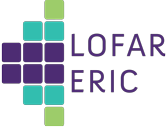Speaker
Description
Gaseous exoplanets generate low-frequency radio emission (<40 MHz), which is associated with aurorae via circularly polarized cyclotron maser mechanism and is directly related to the surrounding space weather. To obtain a detailed analysis of this mechanism, one must measure the stellar wind's electron density and the planet's magnetic field, which is only possible with observations at radio frequencies. Besides many efforts, direct imaging of radio exoplanets has not been successful until today, with only a handful of tentative detections. The Low-Frequency Array (LOFAR) is ideally suited for this task because it can observe at frequencies below 40 MHz and has high sensitivity. However, imaging at such low frequencies is challenging due to high interference levels and rapidly varying ionospheric conditions. To overcome the technical challenges of imaging below 40 MHz, I will present a new pipeline that corrects for all the known instrumental and ionospheric effects. Then, I will show the deepest images down to 15 MHz of a radio exoplanet candidate field. A clear detection of Tau Bootes b would be the first in the field of radio exoplanets and a step forward for imaging at low frequencies. I will end with a brief overview of the learned lessons and introduce an ongoing major LOFAR upgrade that will facilitate deeper imaging down to 15 MHz.

